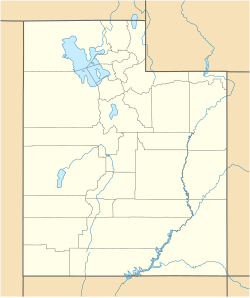Monroe Presbyterian Church | |
 | |
| Location | 20 E. 100 North, Monroe, Utah |
|---|---|
| Coordinates | 38°38′2″N112°7′16″W / 38.63389°N 112.12111°W |
| Area | less than one acre |
| Built | 1884 |
| NRHP reference No. | 80003963 [1] |
| Added to NRHP | March 27, 1980 |
Monroe Presbyterian Church is a historic Presbyterian church at 20 E. 100 North in Monroe, Utah, United States.
It was started in 1884. It was added to the National Register of Historic Places in 1980.

